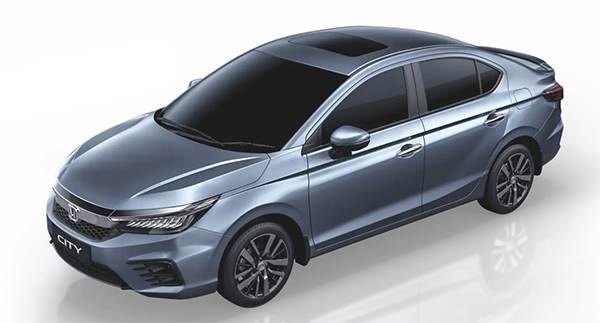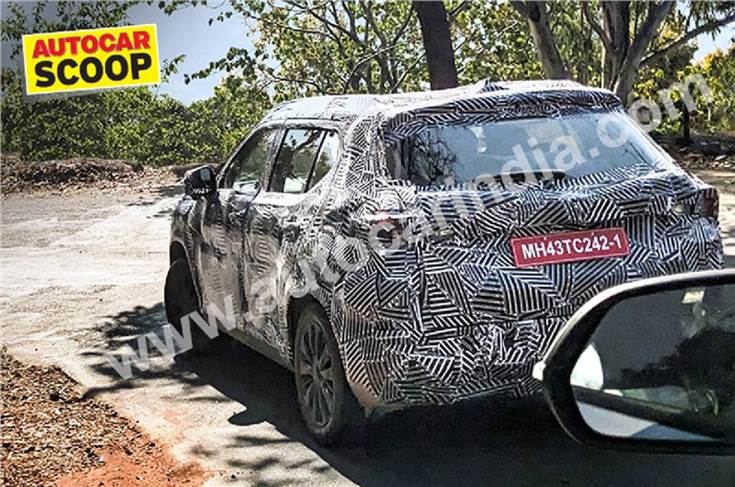Japanese sunroof systems supplier Yachiyo India Manufacturing, which is a key supplier to Honda Cars India (HCIL), is set to localise the single-pane sunroof setup on the Japanese OEM’s upcoming midsize SUV slated for launch later this year. Honda’s new SUV for India was recently snapped testing.
While Honda Cars India’s long-awaited SUV (Codename: 3US) is likely to be introduced around Q2 FY2024 (July-September 2023), it will initially feature a fully imported sunroof at start of production. HCIL is likely to source this high-value component from its counterpart in China, which is also the current supplier of sunroof on its best-selling model – Honda City – currently on sale in the country.
However, given the high landed cost of the imported sunroof, as well as to de-risk its supply chain from external disturbances, it is understood that HCIL is keen to localise the sunroof in India through Yachiyo, which at present only supplies locally manufactured inner fabric sunshade of the sunroof system on the Honda City sedan.

Yachiyo India, at present, supplies locally manufactured inner fabric sunshade for the sunroof system on the Honda City sedan.
The Tier-1 supplier, whose factory is located adjacent to HCIL’s plant in Tapukara, Rajasthan, also supplies in-cabin fabric sunshades of sunroofs to Maruti Suzuki India. According to sources, Yachiyo will augment its domestic manufacturing capabilities in India and localise the single-pane sunroof for HCIL by mid-2025, and supply it on Honda’s upcoming ‘3US’ midsize SUV as a running change.
Honda eyeing annual sales of 75,000 units of new SUV
Autocar Professional also learns that Honda Cars India is eyeing annual volumes of approximately 75,000 units of its upcoming midsize SUV, which is designed to squarely target the likes of the Hyundai Creta and Kia Seltos.
Based on the Honda City platform, the new SUV is likely to be 4.3 metres long. However, while the Creta offers a panoramic sunroof, which is one of the most-liked features of Hyundai’s best-selling SUV in India, Honda seems to be restricted by some design constraints.
 Honda’s new midszie SUV is likely to be 4.3 metres long.
Honda’s new midszie SUV is likely to be 4.3 metres long.
According to sources, the carmaker’s existing sunroof options, like that available on the 2023 Honda Pilot SUV, in its global portfolio, were larger in width and would not fit the roof dimensions of the 3US. It is understood that HCIL, therefore, had no option but to resort to offering a single-pane sunroof in its upcoming midsize SUV which has a lot riding on its shoulders with respect to ensuring Honda’s brand sustenance in the world’s third-largest passenger vehicle market.
Demand for sunroofs going through the roof
The sunroof per se has increasingly gained prominence amongst Indian car buyers, who are willing to pay more for the high-value convenience feature that primarily allows more sunlight inside the cabin, and also offers the flexibility to open the glass pane and use it as a ventilation system. In India, car buyers have a strong affinity for large-sized panoramic sunroofs, which are commonly seen in all high-selling models like the Mahindra XUV700, MG Hector and Hyundai Creta as well as the recently-launched Toyota Innova HyCross MPV.
The marked rise in demand for sunroof-equipped passenger vehicles is a result of the shift in consumer demand for a higher level of comfort and convenience features. What was once offered only in the top-end variants of luxury cars, the sunroof has now percolated to the mass market. As a result, international car manufacturers with Indian subsidiaries as well as local OEMs are increasingly looking for partners to produce openable roof systems within the country.
The accelerating demand for sunroofs recently saw Tier-1 major Webasto expand its domestic manufacturing capacity to 400,000 sunroofs per annum at its plant in Pune, Maharashtra. To cater to the soaring demand for sunroofs, which is literally going through the roof, the company has already commenced work to set up a second sunroof manufacturing facility which is likely to be commissioned by 2025.
